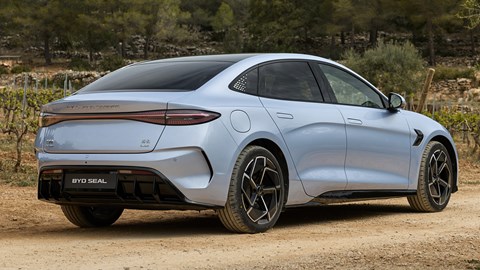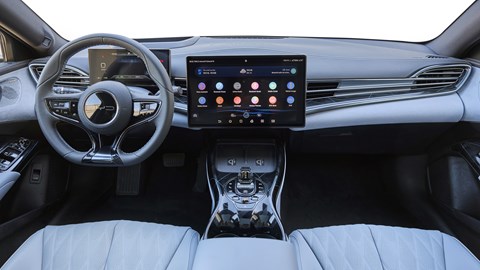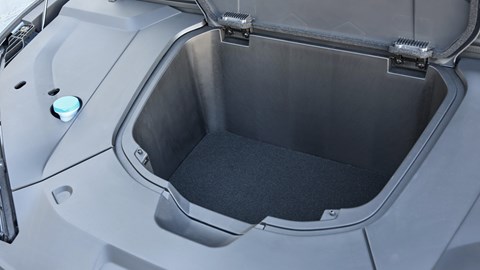► Sleek EV saloon offers up to 354 miles of range…
► … or up to 523bhp from dual-motor AWD setup
► Will launch in autumn 2023, after Dolphin hatchback
The Chinese manufacturer BYD (Build Your Dreams, of course) has confirmed that it will launch the Seal electric car onto the UK market in 2023.
The Seal, also known as the Atto 4 in some markets, dismisses its rather dumpy namesake and takes the form of a fairly sleek if slightly anonymous-looking electric saloon. It looks set to rival the likes of the Tesla Model 3 and Hyundai Ioniq 6, though BYD hasn’t yet confirmed pricing to demonstrate where it’s aiming the Seal in the UK EV market.
What exactly is the BYD Seal EV?
It’ll be the third EV to hit the UK market from Chinese manufacturing giant BYD, after the Atto 3 SUV and the Dolphin hatchback. Don’t dismiss BYD as a bit player – it sold 1.9 million cars in 2022, and is on track for substantial growth through 2023.

The larger BYD Group manufactures just about every component in a BYD car, including the batteries, motors, and even the semiconductors – so the Seal should be immune from chip shortages and supply chain issues that plague plenty of popular EVs.
In terms of size, it’s right between the Tesla Model 3 and the Hyundai Ioniq 6.
What’s under the skin?
The Seal rides on BYD’s own scalable EV architecture, where the patented ‘Blade’ battery fully integrates the cells into the structure of the car, aiding rigidity, packaging, and weight distribution.
There’ll be two powertrain options available. The first uses a single motor producing 308bhp and an 82kWh battery pack – those figures are good for a 0-62mph time of 5.9 seconds and a maximum WLTP range of 354 miles, both very competitive indeed with the single-motor Tesla Model 3.
There’ll also be a high-performance variant with a motor on each axle. A power output of 523bhp means 0-62mph in just 3.8 seconds, while a slightly smaller 80kWh batter provides a 323-mile range. That’s slightly more power than a Model 3 Performance, but the Tesla claims to beat the Seal to 62mph by about 0.5 seconds and offers 340 miles of range.

The inclusion of a heat pump as standard should see the BYD retain more of its range in winter than some rival EVs, while it’ll charge at a fairly standard rate of up to 150kW from a suitably powerful DC charger, or up to 11kW from three-phase AC.
What about equipment?
There’s a massive 15.6-inch infotainment screen that can rotate from landscape to portrait orientation at the press of a button. BYD’s own voice assistant is installed but so are Apple CarPlay and Android Auto if you’d rather override the factory interface.
There’s also a 10.25-inch digital instrument panel and powerful, 12-speaker Dynaudio stereo. The interior benefits from a vast panoramic sunroof, quilted vegan leather upholstery, dual wireless smartphone chargers and heated and ventilated front seats.

In terms of driver assistance, you get the full gamut of safety kit with autonomous emergency braking, cross traffic alert, lane-keeping aids and adaptive cruise.
Specs for UK models have yet to be finalised so we’re not sure how much of this will be standard on each model.
What else should I know?
The Seal’s a saloon, so don’t go expecting to move house in it – the 402-litre boot has a fairly narrow opening, though it’s nice to see a 53-litre frunk ideal for keeping charging cables stowed out of the way.
The Seal will hit UK showrooms in September and we’ll have more information ahead of this, including pricing. If we had to guess, a price tag around the early-£40,000s would keep the Seal in contention with the leanest of Model 3s, though we could see the dual-motor model creeping up north of £50,000.